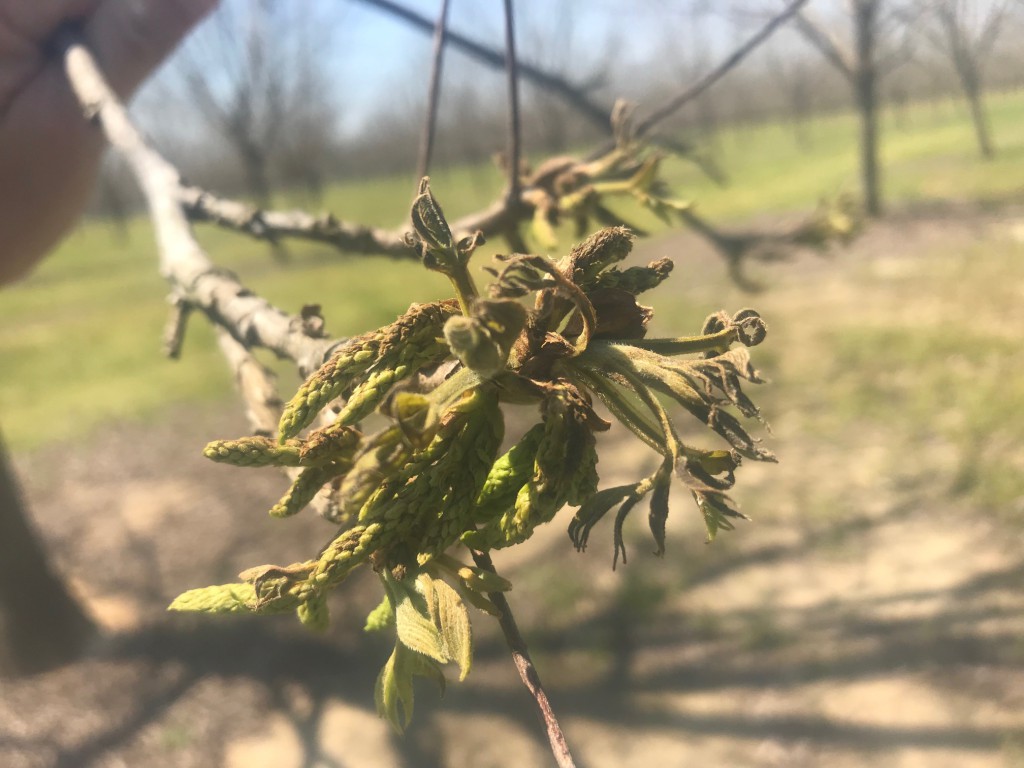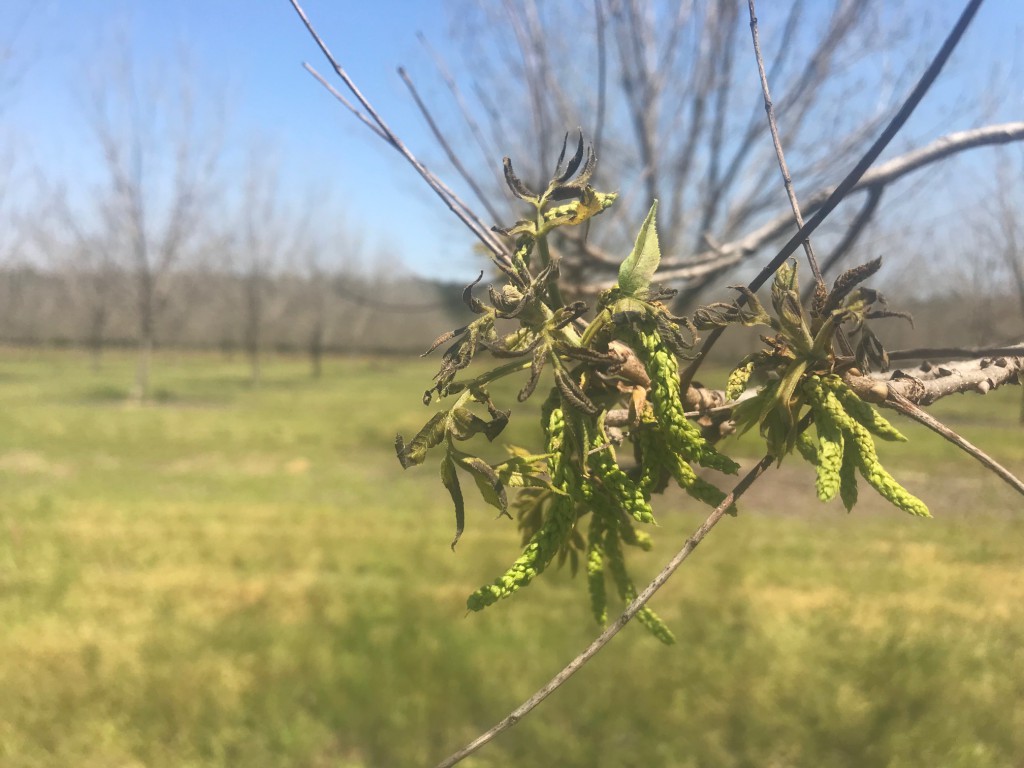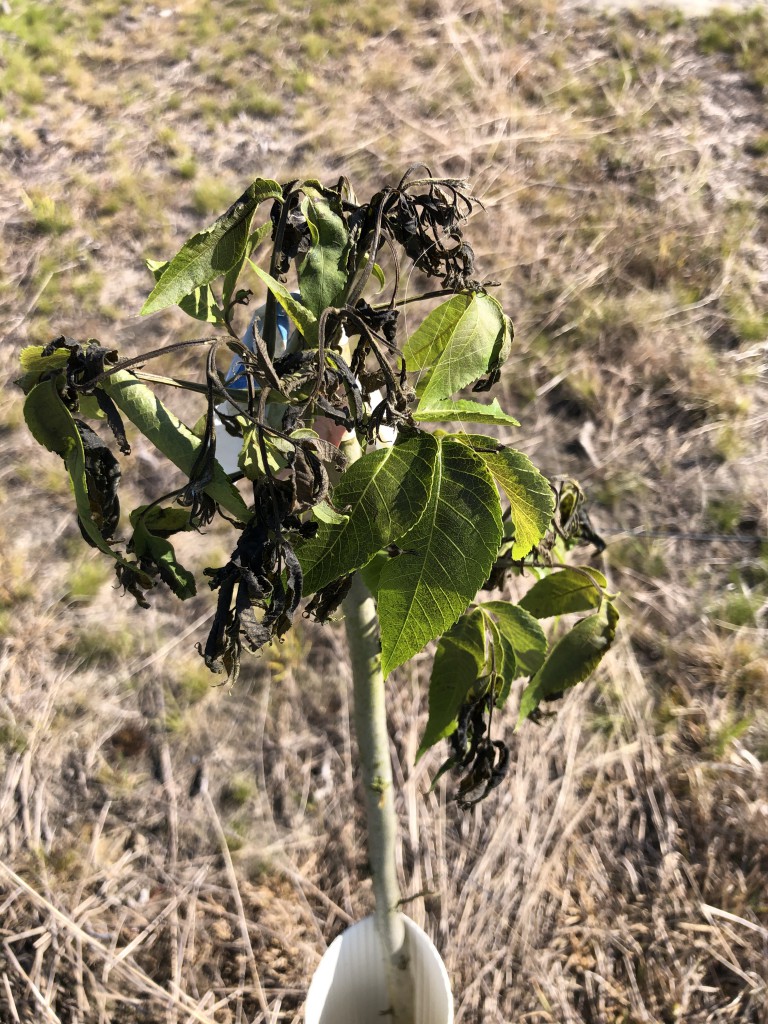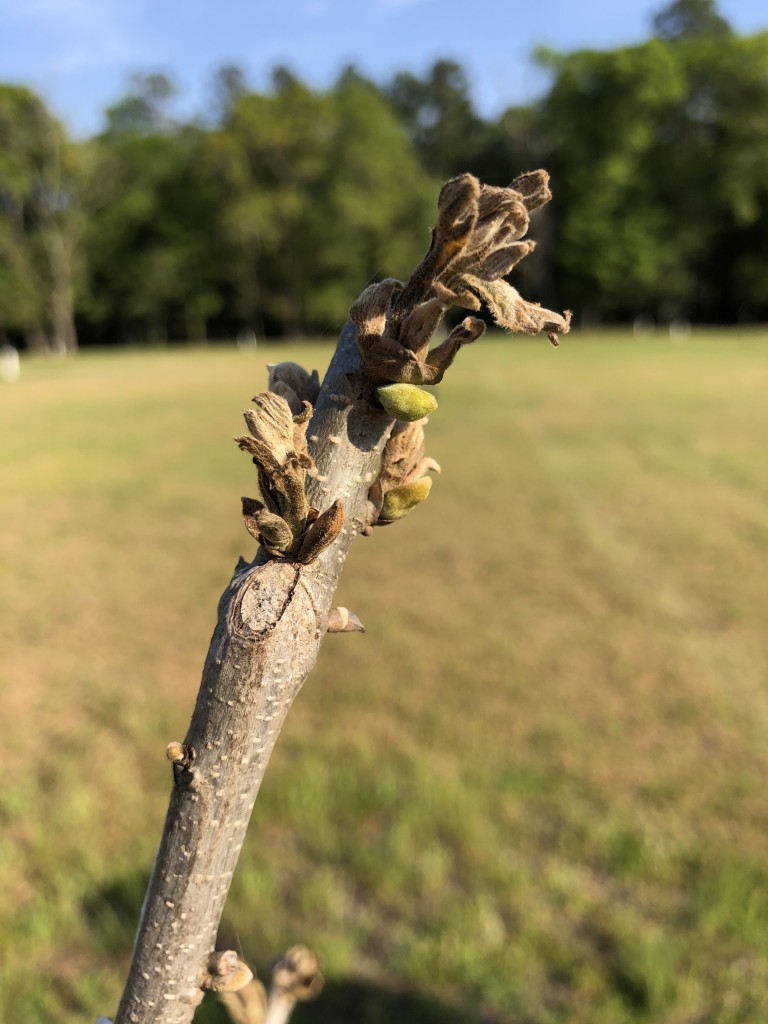The temperatures over the Easter weekend dipped down a little further than forecast in a few areas in the state. April 3 saw the lowest temps of the weekend. While temps in Ft. Valley area reached 32, there were low lying areas that dropped down to as low as 26 degrees. UGA weather stations in E. Georgia show temps of 30-31 but low areas also likely dipped lower. Most green pecan tissues will generally not suffer long-term or crop damaging injury until temps reach 28 degrees and remain there for several hours. It really depends on how far along budbreak and foliage development is. Buds can of course take colder temperatures than green tissue. Tender foliage and the cambium under the thin bark of young or newly planted trees are most susceptible.
We have seen a little damage in isolated areas throughout the state but it appears relatively minor so far. Much of what I have seen looks as though the outer scales and outer leaves unfolding from the buds got burned but the tissue inside appears green and unharmed.
On bearing trees I have seen catkins damaged as well. Most of the damage on bearing trees appears to be on the lower limbs with progressively less damage as you move up the tree. This is because the air is colder closer to the ground and also budreak progresses from low to high in the canopy so fewer buds were open as you go higher in the tree. Overall I expect injury/loss in that situation to be minor with no real long term damage. There may be some crop loss down low on individual trees here and there in those situations but I doubt it will lead to significant production loss for the orchard.


Most of the photos of young trees I have had sent to me show a similar situation. It really depends on how far out the new growth was when the low temps occurred and how low the temps dropped in these isolated areas. The damage would have been worse in all cases if the foliage had been out as far as it was this time last year. The later budbreak this year was a blessing in this regard.


Damaged buds on young trees will re-foliate as long as there was no damage to the wood. You can scrape below the bark to check for this damage on thin-barked young trees. If you have green tissue under the bark you are fine. If it has turned brown there has been more significant damage. Growers need to monitor young trees they think may have been affected through the season. Also look for damaged areas low on the trunk. These damaged areas of the trunk will often appear sunken. Often on trees in which the vascular cambium is damaged in these situations things will look ok at first and then young trees will die back and decline as the temperatures heat up and they cannot keep up with the water demand.
When Should You Begin Spraying?
Another topic of conversation this time of year is when to begin spraying fungicides for scab. It seems every year that many growers are very anxious to get out there and begin spraying. Budbreak is somewhat late this year and the foliage so far has developed slowly due to the intermittent cold snaps we have. Our night-time temperatures have also been low to date and this also contributes to the slow progression of the foliage.
Low night-time temperatures also slow down the progression of scab. We just broke 50 degrees as our avg nightime low in south Georgia (Valdosta and Albany) for the first time this spring as of last night (April 7). Although, scab infection can occur at temps as low as 50 degrees, the most optimum range for scab infection is 59-77 degrees. So, to date, there has been no scab pressure to speak of and very little foliage for it to grow on anyway.
A case can be made for starting sprays soon on very scabby cultivars (Desirable, Morrill, Cunard, etc.) grown in locations with high disease pressure (crowded orchards, poor air-flow, low areas where moisture hangs late into the day, history of severe scab), but by and large, there is absolutely no reason to begin spraying fungicides at this point on most of our moderately susceptible commercial varieties (Creek, Caddo, Kiowa, Cape Fear, Stuart, Oconee, Sumner, Schley, etc.). Even Desirable and Pawnee sprays could be held off another week or two in locations with good elevation and air flow and where there is no recent history of severe scab problems.
The reality of last year’s prices and the potential for a lighter crop combined with the possibility of low prices again this year should have you strongly considering how to reduce your input costs. You are taking a big gamble if you plan on spraying 15-20 times this year. The goal should be 6-12 sprays depending on variety. So bear in mind that with a later budbreak and slow spring foliage development it is very likely that we will have a later crop maturity and harvest. This means we will reach shell hardening later and as a result, you will likely have to spray later into the season than normal. If you begin spraying this early when there is almost no foliage out there to spray, you are extending your spray season unnecessarily and will just have to spray that many more times.
At this point there is no rush in most situations. There is very little foliage out and we now have excellent fungicides. Waiting a couple weeks to spray at this point in the season will not hurt your trees or crop unless you have scabby varieties in high pressure situations.
